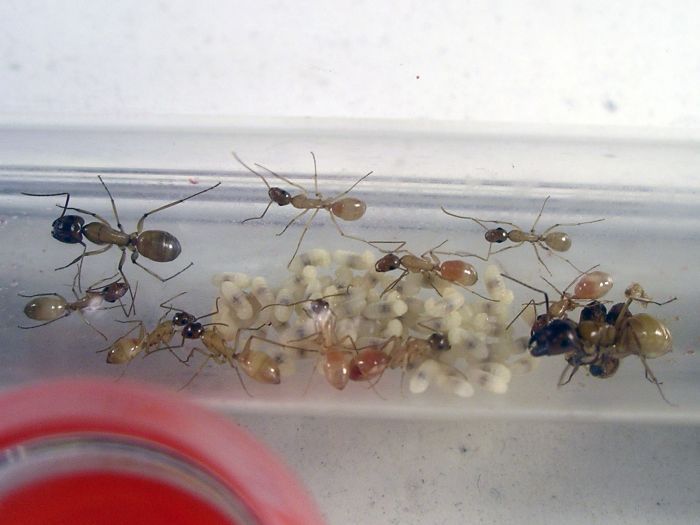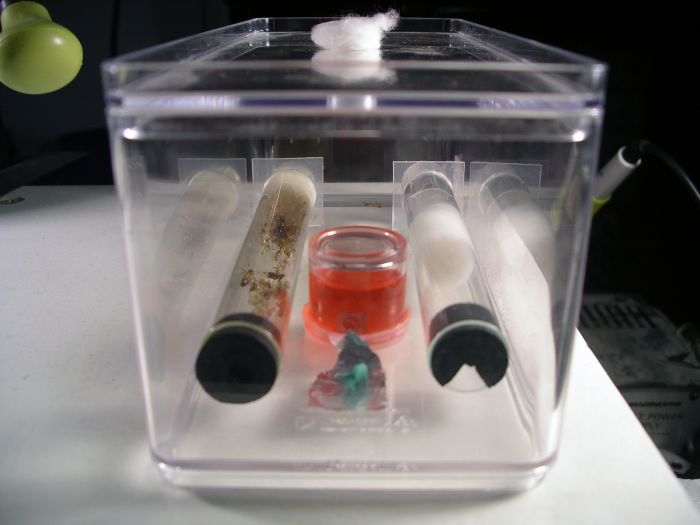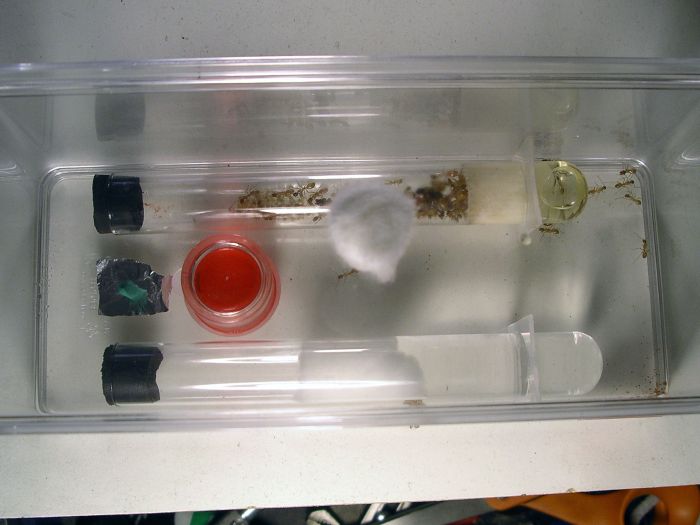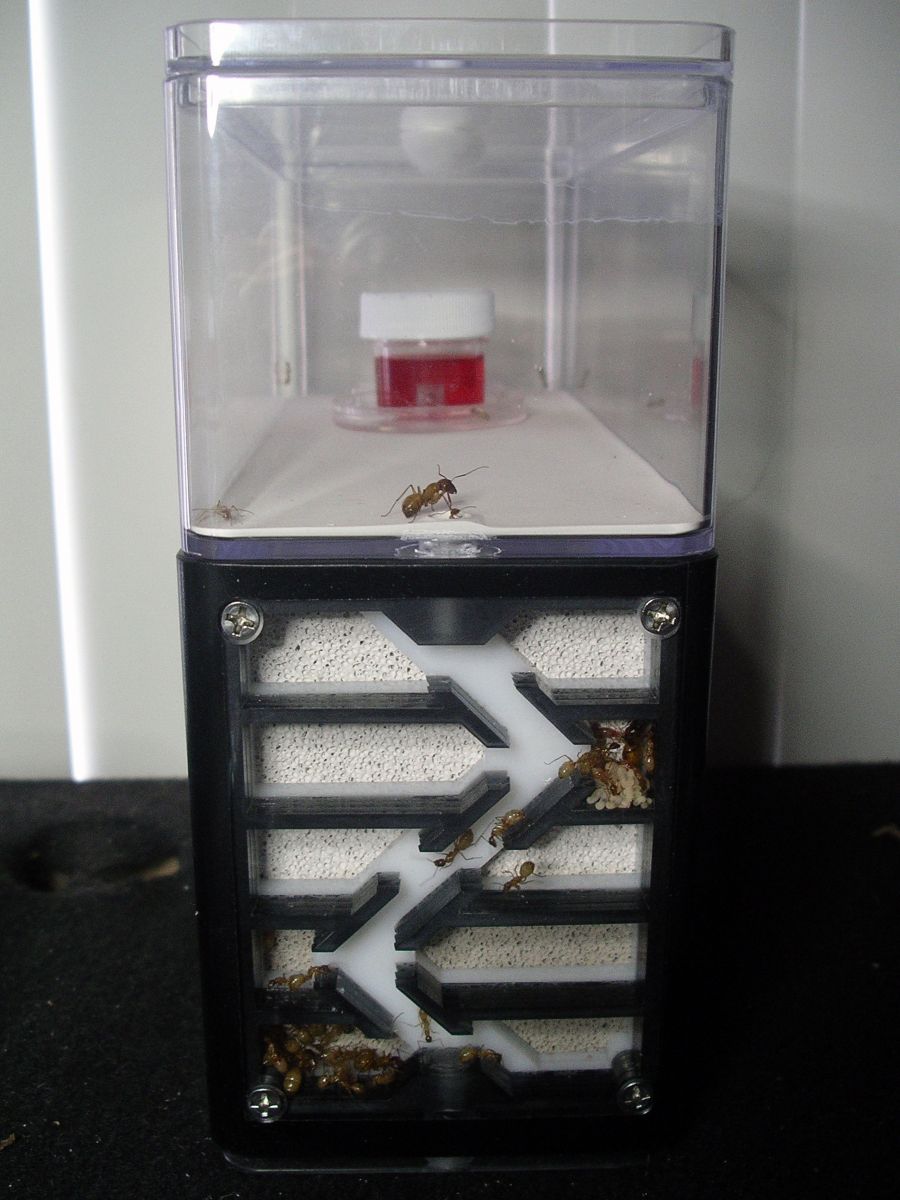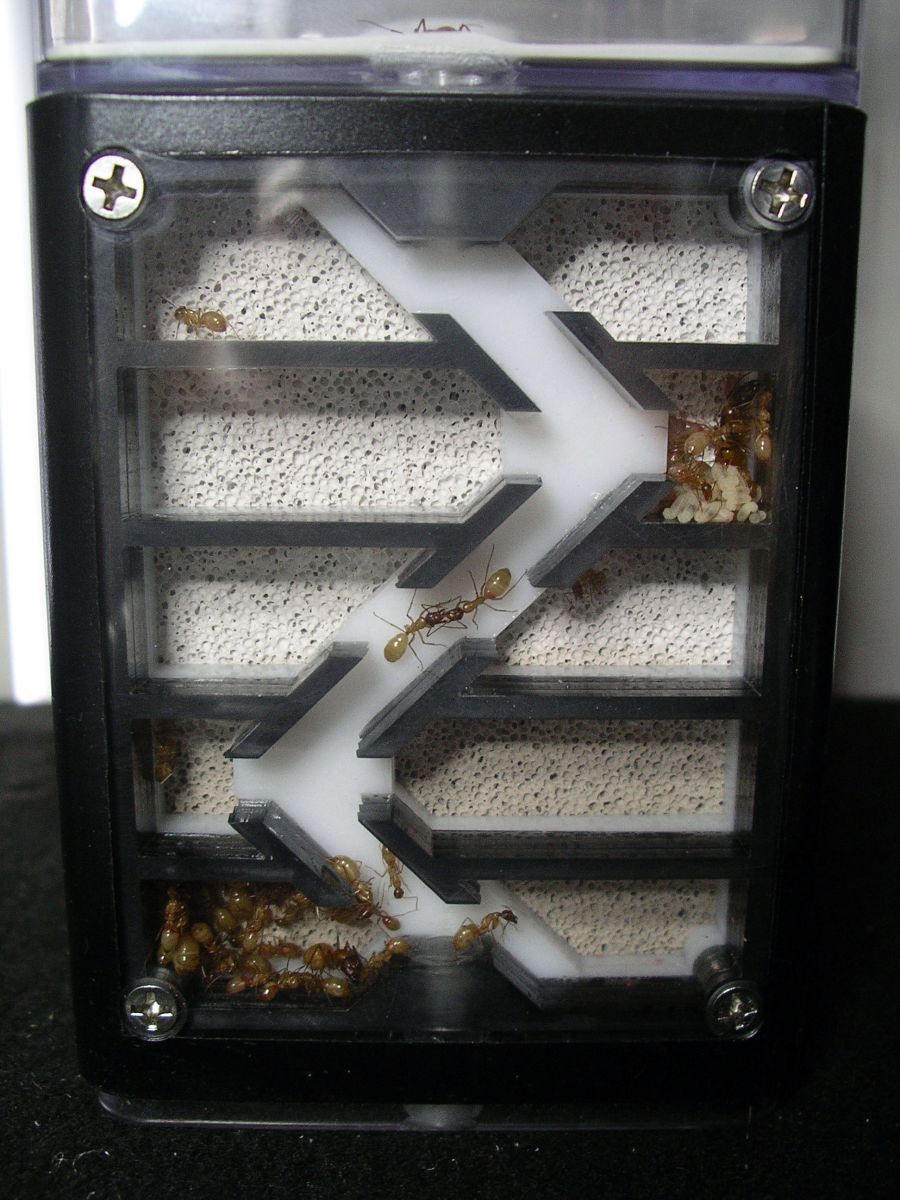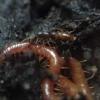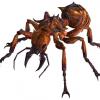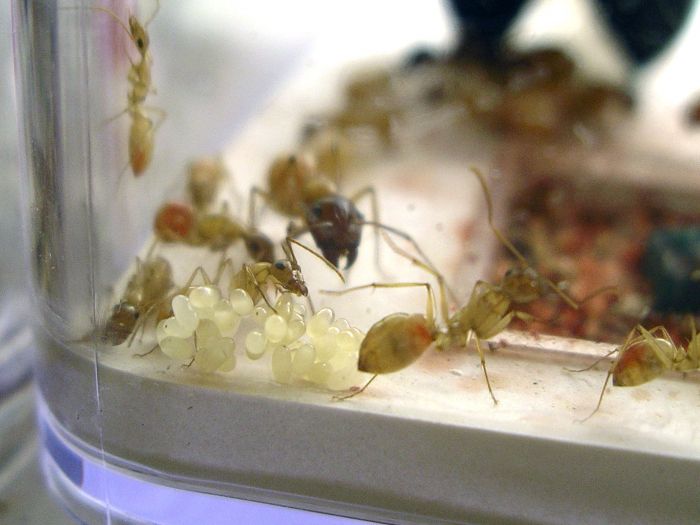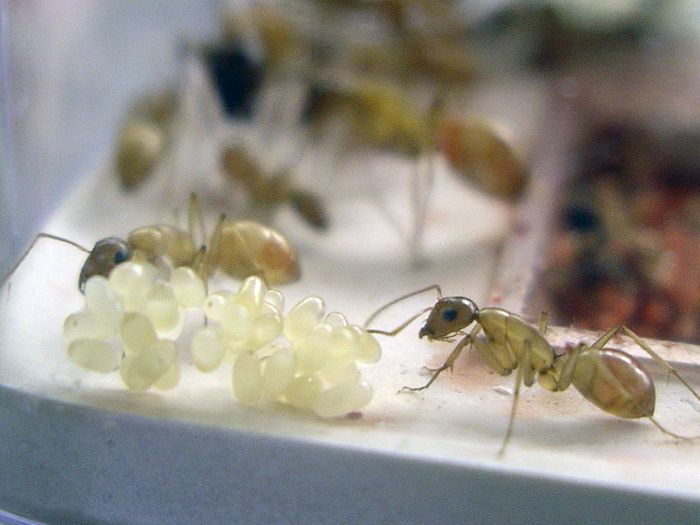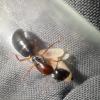3-22-2014
On March 8th 2014, while looking for founding chambers, I dug up a colony of Camponotus semitestaceus in Pinyon Pines, California, which is located on the eastern (desert) side of the San Jacinto Mountains.
Original ID thread: http://www.formicult...s-ca-3-10-2014/
It seems most of the colony was only a few inches deep. I collected the queen and as many workers as I could. I ended up with about 32 workers, with two of them being majors. I never saw any brood though, so there may have been more to the nest. Once I got home, I put them in a foraging container with a test tube.
A week later, while I was out there again, I found five more workers hanging around the entrance of the old nest. I collected them and brought them back with me to add to the colony. Once I put them in with the others, they seemed to get along at first, but then the next morning I found all five of them dead, piled with their trash. I guess one week is enough time for scents to change to the point where they are no longer welcome.
Shortly after this, the queen laid about 35 eggs.
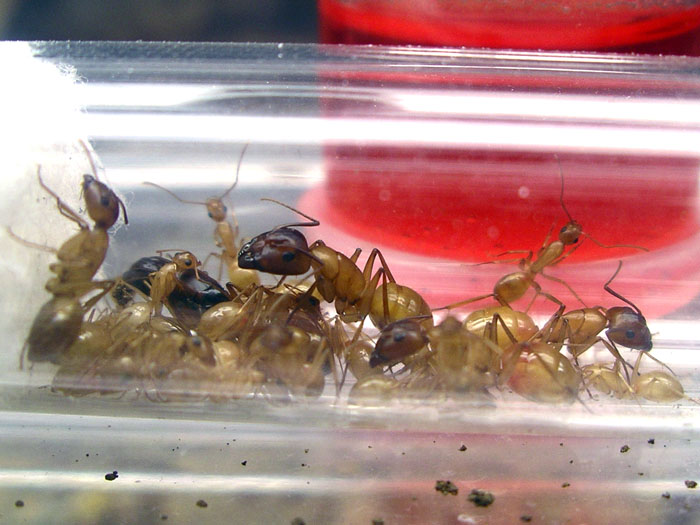
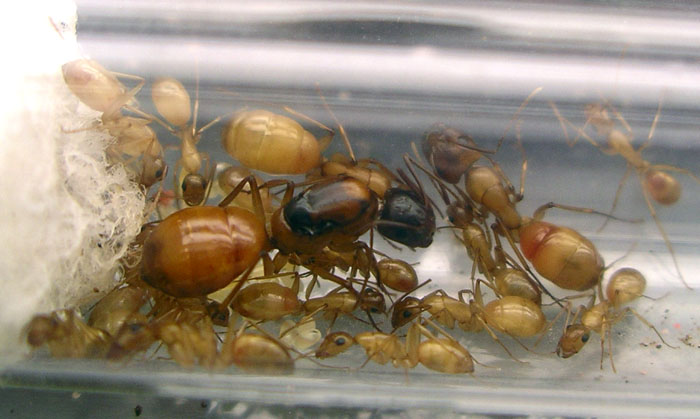
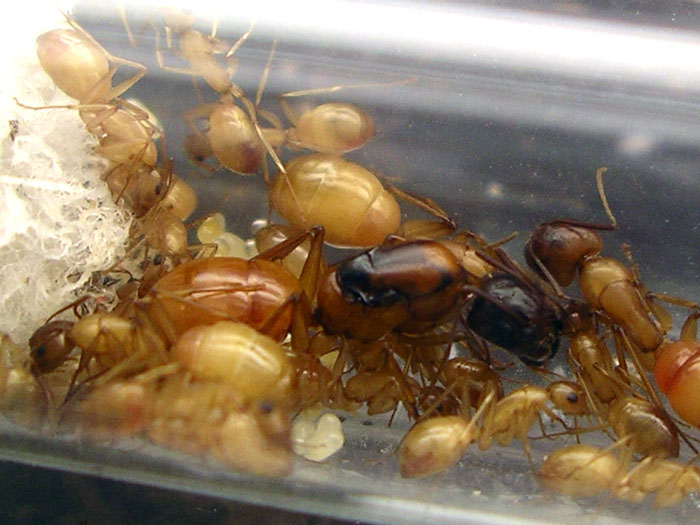
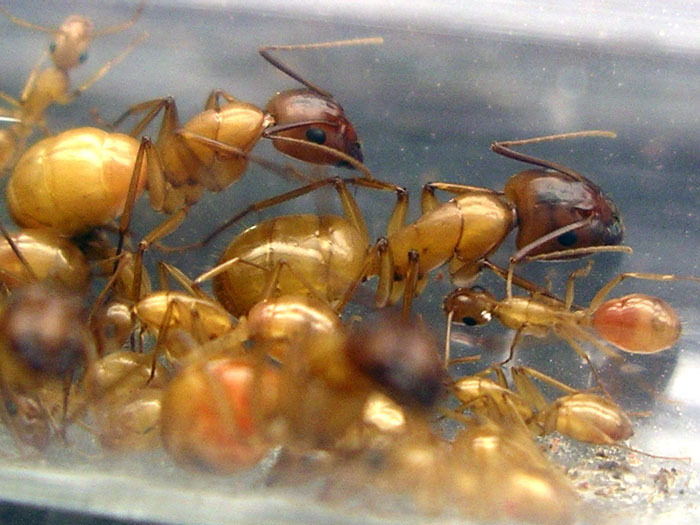
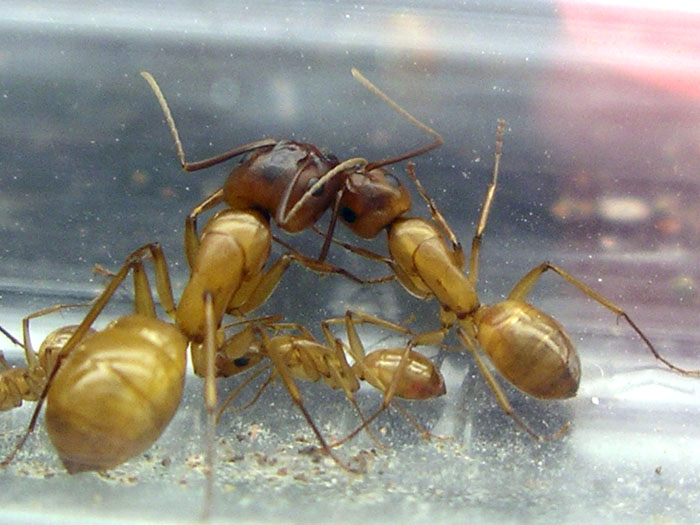
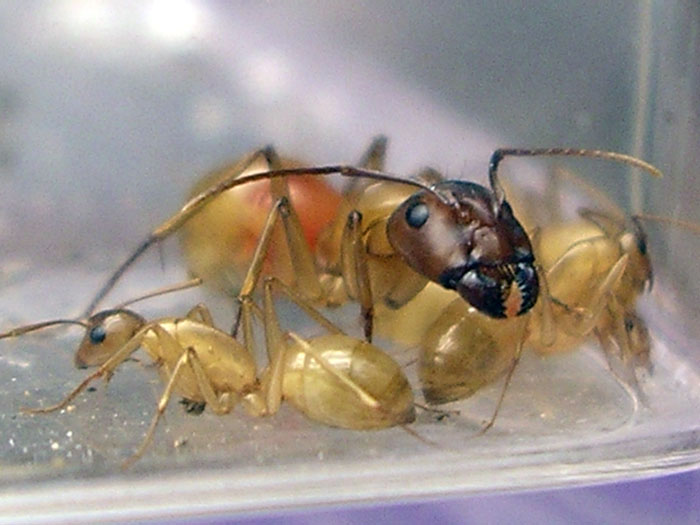
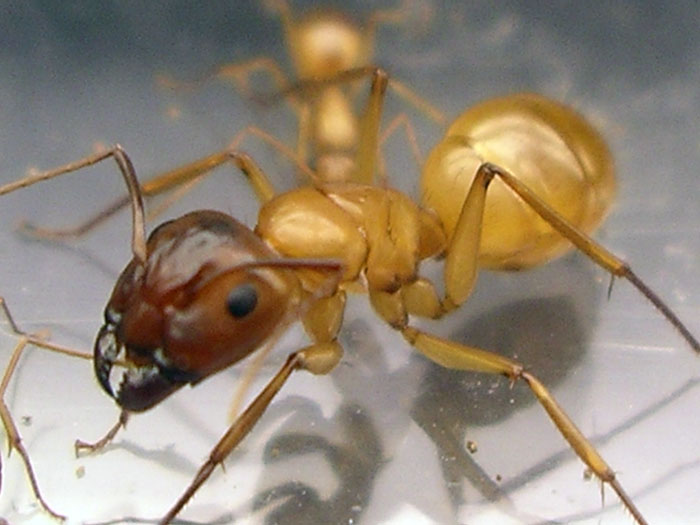
- Formiculture.com
- Forums
- Gallery
- Members
- Member Map
- Chat



